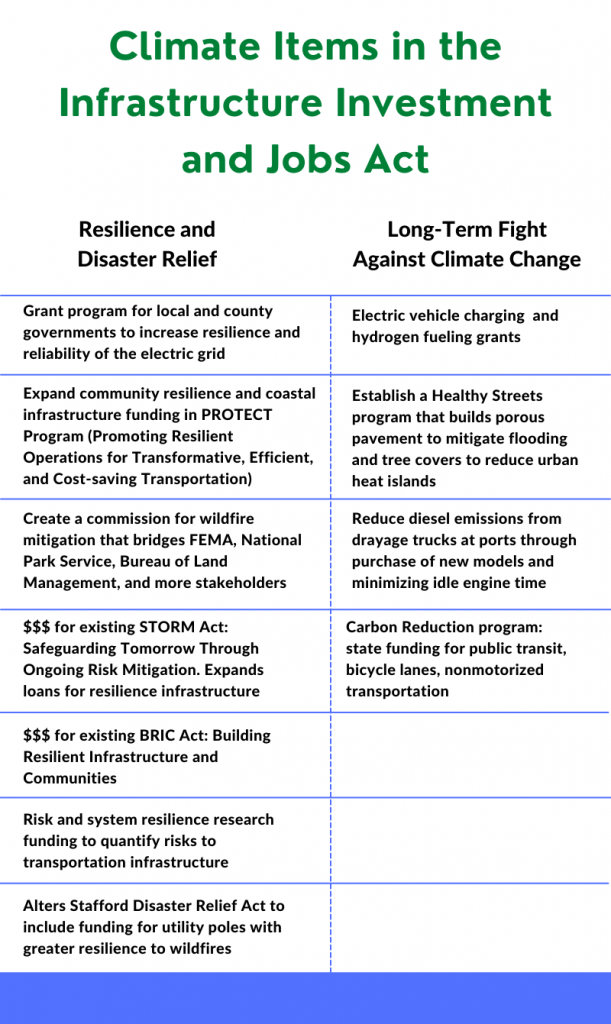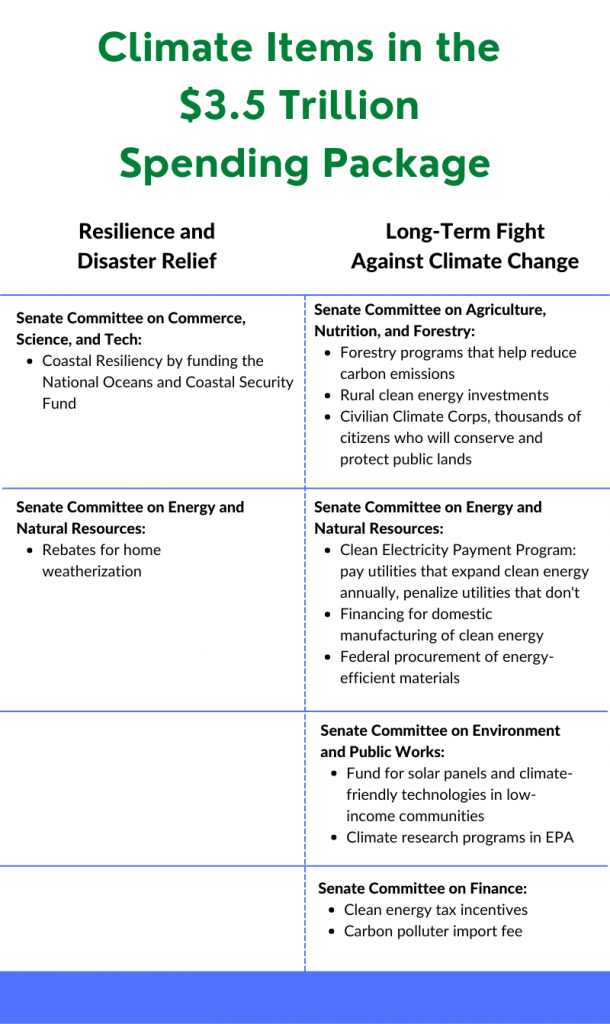The $3.5 Trillion Reconciliation Bill Won’t Make Natural Disasters Less Damaging Anytime Soon
The Democrats’ $3.5 trillion reconciliation bill contains the largest ever investment to combat the long-term impacts of climate change.
It would also do little in the short-term to prevent the kinds of damage and lost lives America saw in the wake of the hurricanes and storms that wracked the country in the last month.
This is a critical point that has been lost in much of the reporting about what this legislation will and won’t do.
A carbon molecule emitted into the air today persists in the atmosphere for 300 to 1000 years. Combating climate change is a multi-generational undertaking. That means that in the short-term, improving the resilience of our infrastructure is perhaps the most urgent task our government can fulfill to save lives and prevent damage.
That’s why the $1.2 trillion bipartisan infrastructure bill awaiting action in the House is such an immediate priority. According to Pew, the bill “contains disaster and flood-resilience provisions of historic proportions. The once-in-a-generation investment would include billions of dollars in resilience measures that would help protect communities from flooding and other disasters at a time when people across the country, and around the world, are struggling to combat the increasing severity of deadly storms and rising seas.”
In much of the recent reporting, climate measures tend to get lumped into a single, all-encompassing environmental policy bucket. But in the context of Congress’ current legislative priorities, it is essential to recognize that lawmakers are considering two very different kinds of policies, which are designed to either:
- Improve resilience and mitigate the impacts of severe weather and natural disasters, or
- Combat the underlying drivers and long-term impacts of climate change
The New Center analyzed both the $1.2 trillion bipartisan Infrastructure Investment and Jobs Act as well as the Democrats’ emerging $3.5 trillion reconciliation package, where it became clear the former prioritizes resilience funding, while the latter prioritizes long-term climate change solutions.


